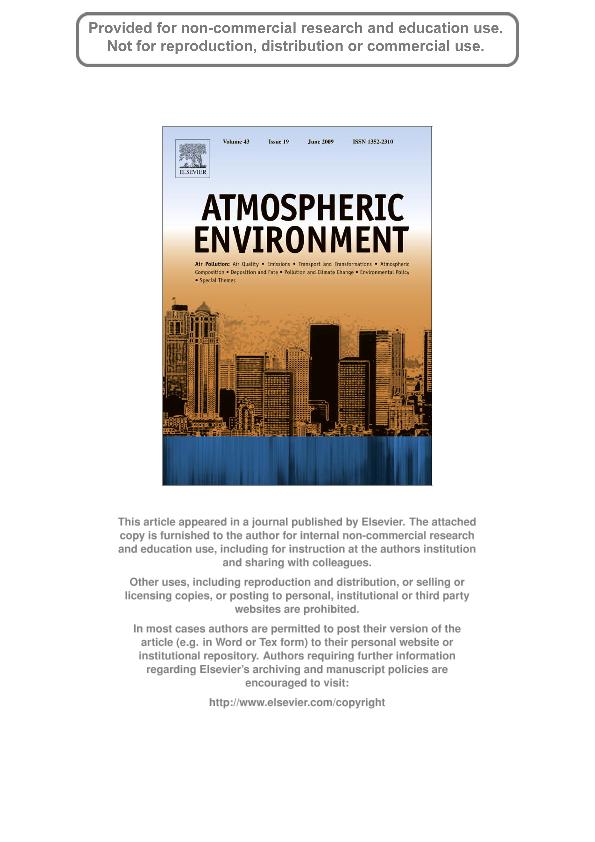Artículo
Effect of different types of clouds on surface UV-B and total solar irradiance at southern mid-latitudes: CMF determinations at Córdoba, Argentina
Fecha de publicación:
06/2009
Editorial:
Pergamon-Elsevier Science Ltd
Revista:
Atmospheric Environment
ISSN:
1352-2310
Idioma:
Inglés
Tipo de recurso:
Artículo publicado
Clasificación temática:
Resumen
The effect of clouds on total and UV-B irradiance in Córdoba, Argentina, was studied employing the TUV 4.1 model and measurements obtained with YES UVB-1 and YES TSP-700 radiometers, and a spectral radiometer Ocean Optics USB-4000. The experimental measurements were selected from a 10 years dataset (1999-2008). Clouds were classified by direct observation as cirrus, cumulus, and stratocumulus. The broadband Cloud Modification Factors (CMFs) have been calculated in the range of the total and the UV-B radiation for these types of clouds. The relations between them were analyzed for a significant number of days. The broadband CMF values range from around 0.1 up to 1.25, depending on the wavelength interval and on the cloud type. The CMFUVB versus CMFT plots for different clouds have shown good adjustments and significant differences, which allows the distinction between them. Stratocumulus clouds show large attenuations and a linear relation with larger slopes as the solar zenith angle (SZA) increases. For this type of clouds an average slope of (1.0 ± 0.2) was found. The relation between the CMF for cumulus clouds is linear with an average slope of (0.61 ± 0.01). No dependence with the SZA was observed. Cirrus clouds plots show an exponential behavior with fit parameters equal to (0.48 ± 0.08) and (0.68 ± 0.15). However, when small SZA intervals are analyzed a linear relation is found. When the relations between the CMF were similar (cumulus and cirrus), the spectral variation in the UV range (320-420 nm) of a modified CMF (CMFm) was used to distinguish them. Hence, the spectral differences among the three types of clouds have been also analyzed for several days and SZA. Here, it was found that the effect of cirrus is essentially wavelength independent while cumulus and stratocumulus clouds show exponential decay relations but with different ordinates. In the analyzed relations the microphysical properties of the clouds seem to determine its behavior while the optical thickness leads to the different degrees of attenuation. The results obtained in this work are in agreement with those found for other authors.
Archivos asociados
Licencia
Identificadores
Colecciones
Articulos(IFEG)
Articulos de INST.DE FISICA ENRIQUE GAVIOLA
Articulos de INST.DE FISICA ENRIQUE GAVIOLA
Articulos(INFIQC)
Articulos de INST.DE INVESTIGACIONES EN FISICO- QUIMICA DE CORDOBA
Articulos de INST.DE INVESTIGACIONES EN FISICO- QUIMICA DE CORDOBA
Citación
Lopez, Maria Laura; Palancar, Gustavo Gerardo; Toselli, Beatriz Margarita; Effect of different types of clouds on surface UV-B and total solar irradiance at southern mid-latitudes: CMF determinations at Córdoba, Argentina; Pergamon-Elsevier Science Ltd; Atmospheric Environment; 43; 19; 6-2009; 3130-3136
Compartir
Altmétricas




